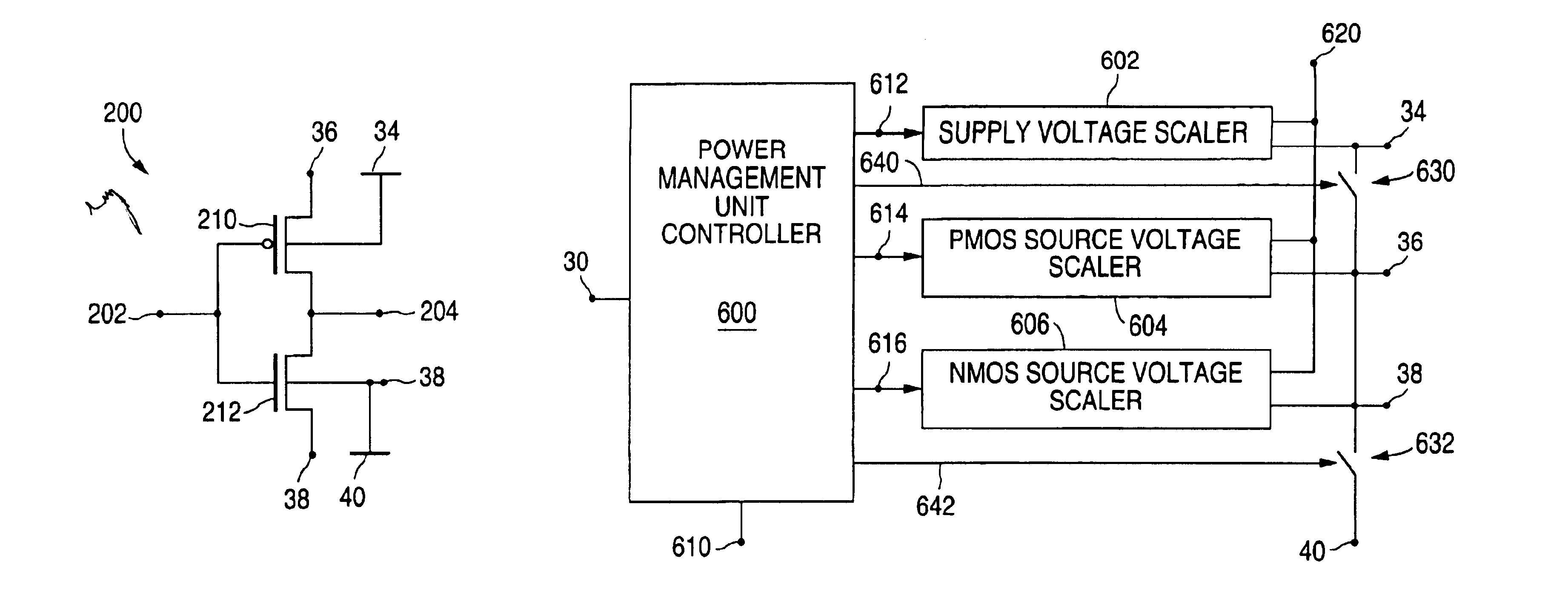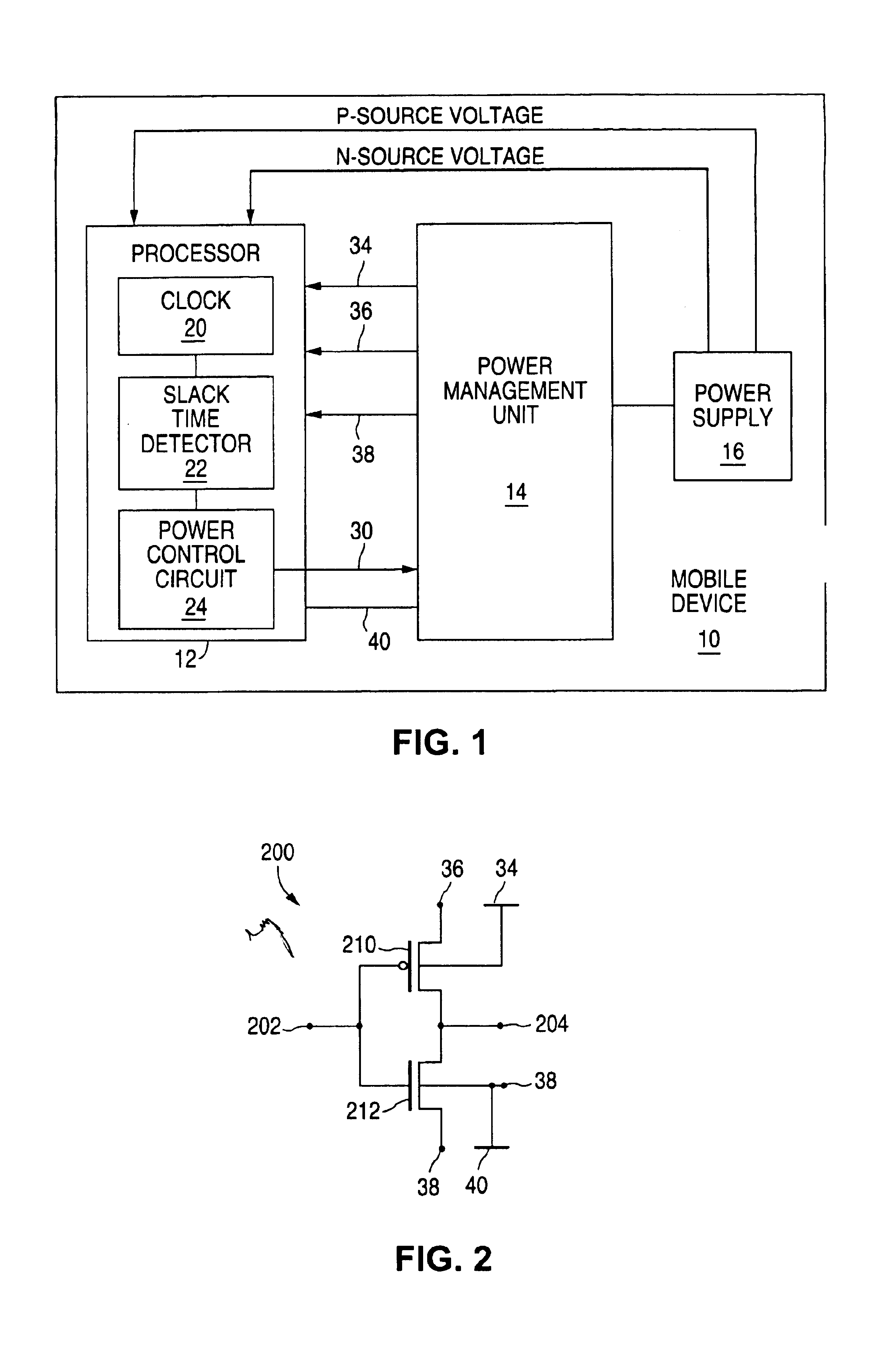Method and system for reducing leakage current in integrated circuits using adaptively adjusted source voltages
- Summary
- Abstract
- Description
- Claims
- Application Information
AI Technical Summary
Benefits of technology
Problems solved by technology
Method used
Image
Examples
Embodiment Construction
[0029]FIGS. 1 through 8, discussed below, and the various embodiments used to describe the principles of the present invention in this patent document are by way of illustration only and should not be construed in any way to limit the scope of the invention. Those skilled in the art will understand that the principles of the present invention may be implemented in any suitably arranged integrated circuit.
[0030]FIG. 1 is a block diagram illustrating a mobile device 10 that is operable to minimize power consumption using adaptively adjusted source voltages and using cooperative adaptive voltage and threshold scaling in accordance with one embodiment of the present invention. The mobile device 10 may comprise a mobile telephone, a personal digital assistant or any other suitable type of mobile device.
[0031]The mobile device 10 comprises a processor 12, a power management unit 14, and a power supply 16. The mobile device 10 also comprises other suitable components to enable its operatio...
PUM
 Login to View More
Login to View More Abstract
Description
Claims
Application Information
 Login to View More
Login to View More - R&D
- Intellectual Property
- Life Sciences
- Materials
- Tech Scout
- Unparalleled Data Quality
- Higher Quality Content
- 60% Fewer Hallucinations
Browse by: Latest US Patents, China's latest patents, Technical Efficacy Thesaurus, Application Domain, Technology Topic, Popular Technical Reports.
© 2025 PatSnap. All rights reserved.Legal|Privacy policy|Modern Slavery Act Transparency Statement|Sitemap|About US| Contact US: help@patsnap.com



